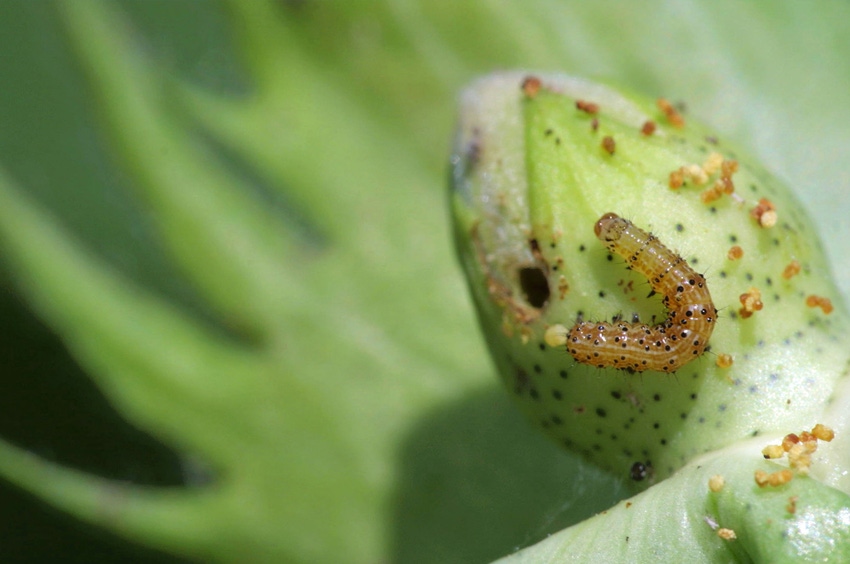
Just because a grower plants Bt cotton, does not guarantee they are going to prevent a pest problem, says Dr. David Kerns, professor and IPM coordinator, Department of Entomology/Texas AgriLife Extension, during his review of the bollworm situation at the Texas Plant Protection Association annual conference at Bryan, Texas, in December.
“Consultants and growers had a difficult time with bollworms surviving in their Bt cotton in 2017,” Kerns says. “We conducted a number of survey bioassays to look at whether or not these bollworms were resistant to the Bt toxins.”
Bt cotton varieties produce either or both crystal (Cry) and vegetative insecticidal proteins (Vip) that target specific caterpillar pests such as beet armyworm, cotton bollworm and tobacco budworm. The first-generation Bt cotton (Bollgard) had a single Bt gene that produced Cry1Ac. The second-generation Bt technologies, such as Bollgard II (Cry1Ac+Cry2Ab), TwinLink (Cry1Ab+Cry2Ae), and WideStrike (Cry1Ac+Cry1F), produce two Bt toxins, and the most recent third-generation Bt technologies (WideStrike 3, Bollgard 3, and TwinLink Plus) are three-gene trait products.
“Essentially, what we found is that there are very high levels of resistance, especially to Cry1Ac. We’re also picking up high levels of resistance to the Cry2 proteins, but not as severe as with Cry1Ac,” says Kerns. “The WideStrike technology has struggled the most. Cry1F isn’t very effective towards bollworm from the get-go, and with high resistance to Cry1Ac, there is little to fall back on. Bollgard II or the TwinLink also have Cry1A toxins but get more help from their Cry2 toxins. However, with increasing Cry2 failure these technologies also suffered in 2017.”
What that leaves growers to plant is Vip technology: WideStike 3, Bollgard 3 or TwinLink Plus, a different kind of Bt toxin, says Kerns. “We don’t see resistance to that toxin but we’re very concerned about it. It’s not a high-expressing toxin in cotton, so you can get injury even to something that’s not necessarily resistant to Vip. If the plant is under stress, then it’s not going to produce as much toxin and you may have some survival on it.”
The next big concern is bollworm-resistance to Vip, Kerns says. “If we get resistance to that toxin we don’t have anything to back it up right now.”
Once cotton is planted, growers need to check their fields for larvae as soon as it starts fruiting, says Kerns, though they typically don’t become a significant pest until after bloom through cut out. “It’s a matter of looking for them. In some areas, where you traditionally have very high pressure, you need to be paying closer attention,” says Kerns. “Once they get lower in the plant canopy, they’re very hard to control, even with our best insecticides. If they get way ahead of you and they start getting down into the lower fruit, you’re just not going to be able to get them. So, timing is critical.”
About the Author(s)
You May Also Like






